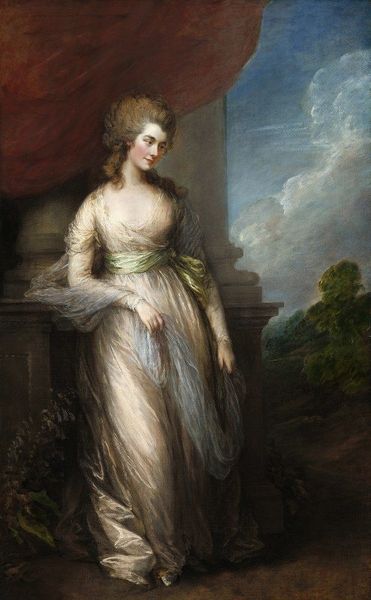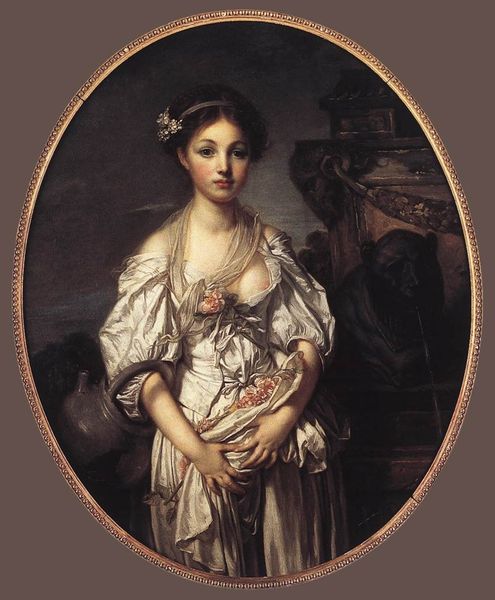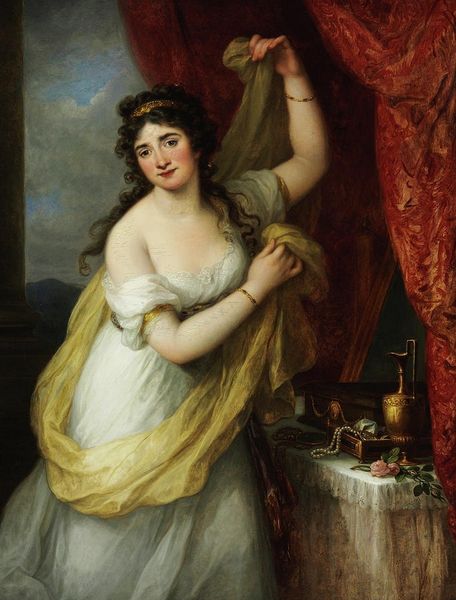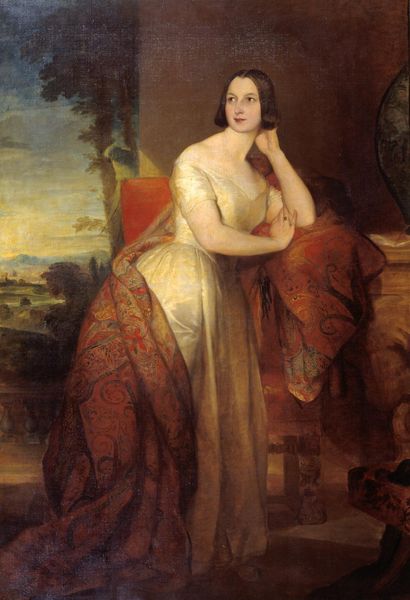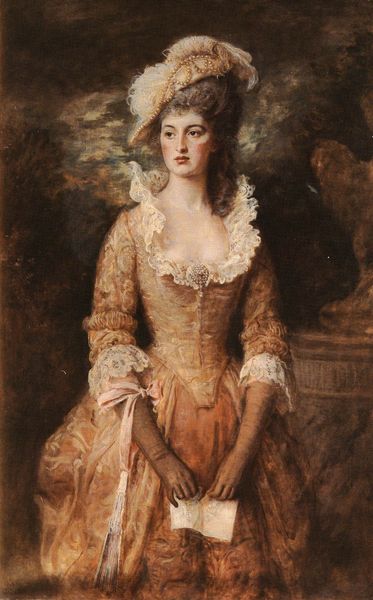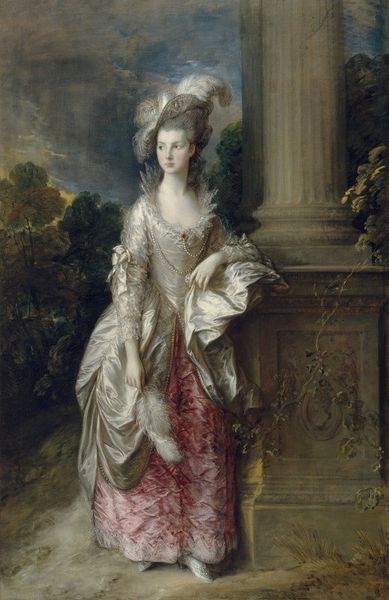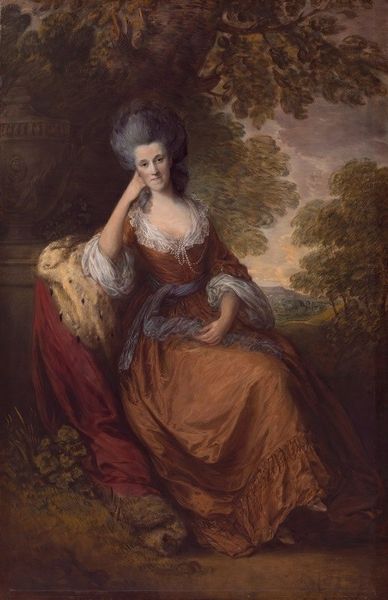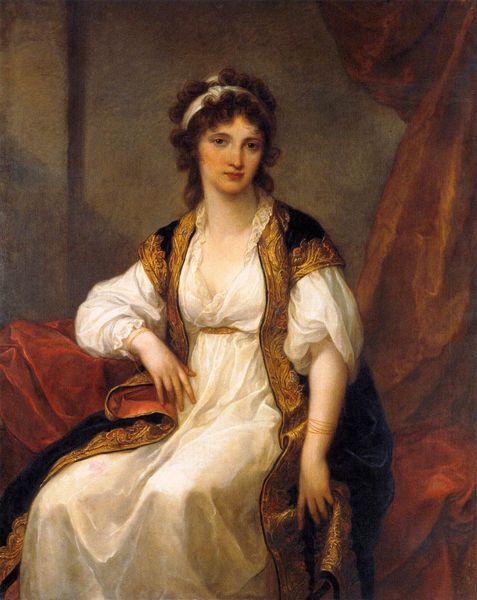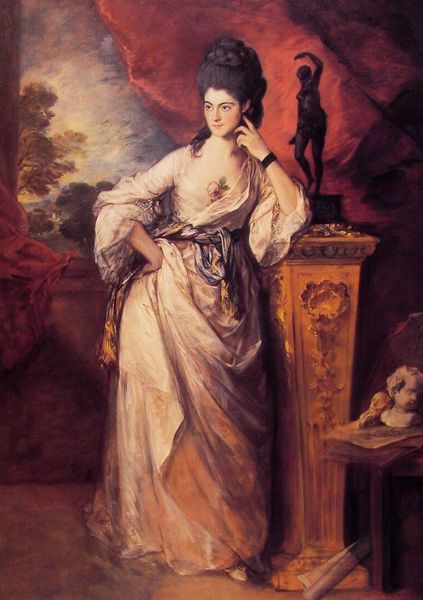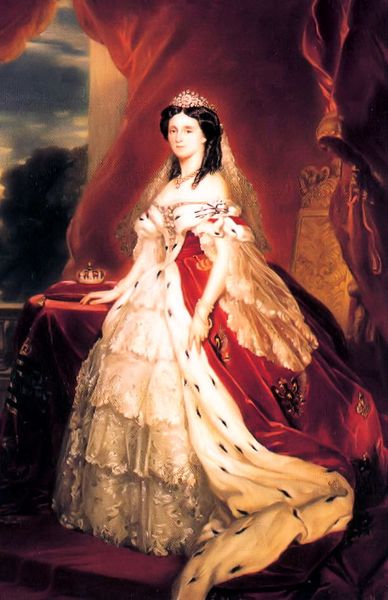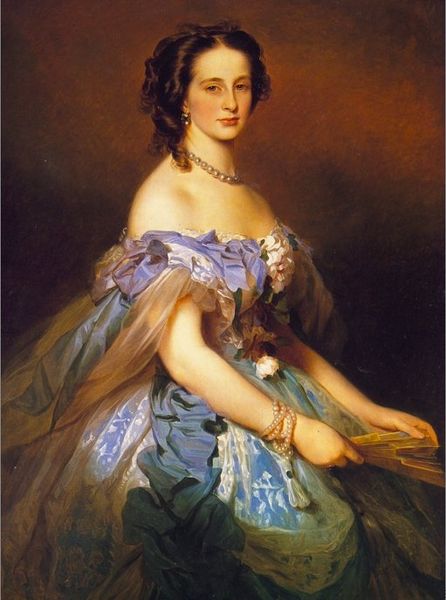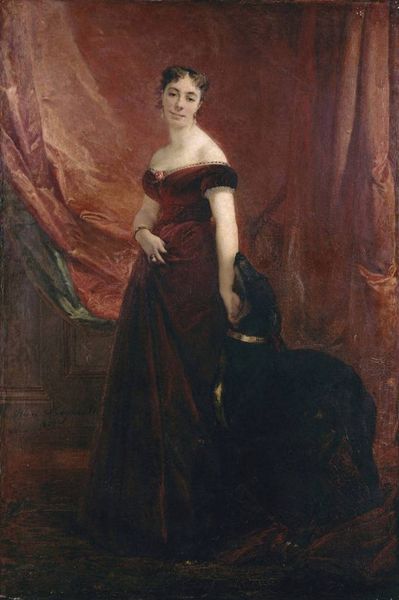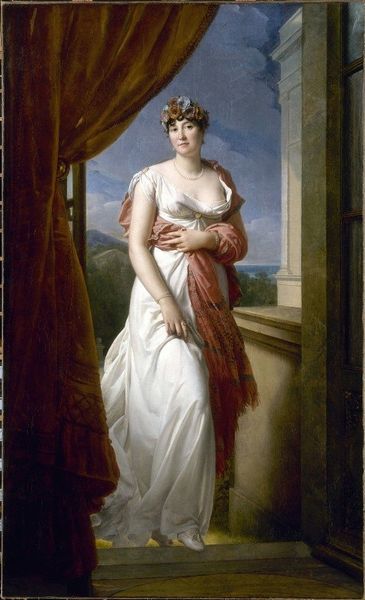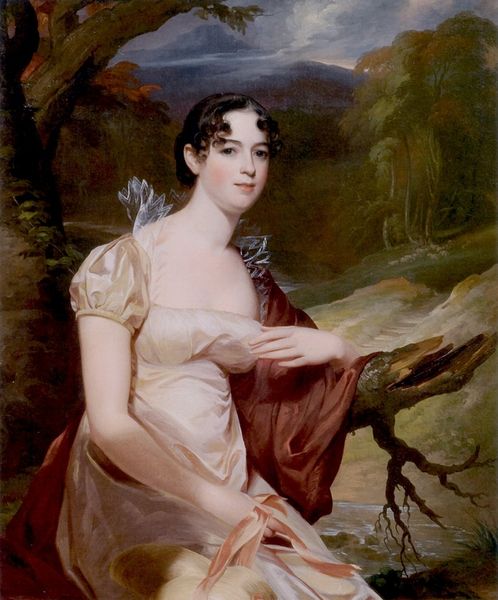
painting, oil-paint
#
portrait
#
painting
#
oil-paint
#
figuration
#
oil painting
#
classicism
#
romanticism
#
genre-painting
#
history-painting
#
lady
#
portrait art
#
fine art portrait
Copyright: Public domain
Editor: Here we have John Hoppner's "Portrait of Mademoiselle Hilligsberg," painted in 1791 using oil on canvas. What immediately strikes me is the theatricality of the scene – her pose, the drapery – it feels like a staged performance. What do you see in this piece? Curator: Beyond the immediate visual impression, consider the weight of classical symbols interwoven with the rise of Romanticism. Hoppner presents Mademoiselle Hilligsberg in a flowing dress that recalls ancient Greek drapery, hinting at ideals of beauty and virtue. Yet, there's a looseness, an emotional expressiveness, that pulls away from strict Neoclassical restraint. Editor: So it's a fusion of styles? I see what you mean. What about the accessories, the urn, the tambourine – are they also symbolic? Curator: Precisely! The urn often represents mourning or memory, perhaps alluding to a fleeting moment of glory or a reflection on the transience of life. The tambourine, on the other hand, could symbolize music, dance, and revelry, things that often go hand-in-hand, evoking ideas of both celebration and ephemerality. Look closely; what emotions do they stir within you? Editor: It's fascinating how these objects create a sense of temporal tension, celebration mixed with remembrance, almost a melancholic joy. I wouldn’t have picked that up on my own! Curator: Exactly! The visual language constructs our understanding. The painting doesn't merely present a portrait, but a complex interplay of symbols and emotions that resonated deeply with its 18th-century audience – a reflection, perhaps, of their own hopes, fears, and fascination with antiquity. Editor: This has given me a whole new appreciation for how much cultural meaning can be packed into a single image. It really underscores the importance of looking beyond the surface. Curator: Indeed, visual literacy allows us to unlock these hidden layers of meaning and to appreciate art not just as aesthetic objects, but as time capsules of cultural memory.
Comments
No comments
Be the first to comment and join the conversation on the ultimate creative platform.
